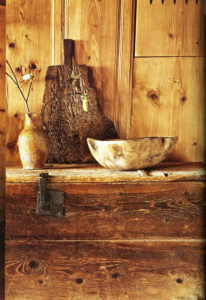Although cultural differences around the world seem to be gradually diminishing thanks to the media, social networks and massive travel, they are certainly not being completely erased. Fortunately for us – a few decades of the Internet and the subsequent expansion of social networks cannot erase centuries to millennia of ancient different traditions, customs and philosophies. Although we see many young people in Asia comparing themselves to our Western culture, we Westerners still have a lot to inspire and learn from ancient Eastern philosophies.
Mushin
One of these inspirational concepts is the Japanese term “mushin” – a fascinating form of meditation and mental state that can significantly affect the way a person lives and leads his life.
 The word “mushin” consists of two kanji characters: 無 (mu), which means “emptiness,” and 心 (shin), which means “heart,” “spirit,” or in this case, “mind.” Mushin can be roughly translated to “nothing on the mind” or “no mind.” It comes from a longer phrase used in Zen Buddhism, “無心 の 心” (mushin no shin), or “mind without thinking.”
The word “mushin” consists of two kanji characters: 無 (mu), which means “emptiness,” and 心 (shin), which means “heart,” “spirit,” or in this case, “mind.” Mushin can be roughly translated to “nothing on the mind” or “no mind.” It comes from a longer phrase used in Zen Buddhism, “無心 の 心” (mushin no shin), or “mind without thinking.”
What is mushin?
Mushin is a state of mind where your mind is empty of all thoughts, desires, ideas and assumptions. When your mind is clear, you are free from your ego and you are able to act spontaneously and fluently without emotion or hesitation. That way, your mind is opened to everything.
It is a concept that is important in many traditional Japanese arts such as ikebana flower arranging, a beautiful style of shodo calligraphy or sumi-e ink painting, but especially for Asian martial arts such as aikido.
The discipline and awareness of the present moment are very important for these arts. Through mushin, artists or fighters achieve great concentration and sensitivity. When their mind is clear, their work is intuitive and flows from the subconscious.
History
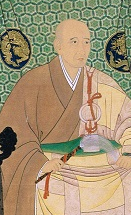
The first mention of mushin comes from the famous Zen Buddhist monk of the 17th century (but also a prominent Japanese poet, painter, calligrapher, expert in the tea ceremony) and, among other things, the excellent swordsman Takuan Soho (1573-1645) in The Unleashed Mind. In this work he combines aspects of Zen Buddhism with martial arts. The following paragraph provides an excellent explanation of what happens in the mind when in the mushin state:
“When the swordsman stands against his opponent, he is not to think of the opponent, nor of himself, nor of his enemy’s sword movements. He just stands there with his sword which, forgetful of all technique, is ready only to follow the dictates of the subconscious. The man has effaced himself as the wielder of the sword. When he strikes, it is not the man but the sword in the hand of the man`s subconscious that strikes.”
 Such a pure state of mind, pure mental clarity, means that the mind is not firm, busy with thoughts or emotions, and therefore open to everything. Present, conscious and free.
Such a pure state of mind, pure mental clarity, means that the mind is not firm, busy with thoughts or emotions, and therefore open to everything. Present, conscious and free.
This state is attained when the mind is freed from anger, fear, distracting thoughts, ego, and judgments. One is absolutely free to act and respond to situations without fear and without being disturbed by external factors. At this point, he doesn’t rely on what he thinks the next move should be, but what his naturally trained reactions are, or what he feels intuitive. However, it is not a state of relaxation close to sleep. We can say that the mind works very fast, but without intention, plan or direction.
Mushin in the western world
Mushin is a Japanese concept rooted in Zen Buddhism. But a certain version of mushin can be found in many different arts and disciplines around the world. For example, an athlete on the track also experiences some form of mushin. He must free himself from conscious thinking in order to “only” run. Although, for example, their extreme sharpness of concentration is called something else. The same can be said about actors whenever they improvise or get lost in a character. They must absolutely clear their minds of their ego so that they can respond quickly and appropriately to situations.
Why could it be useful for us?
Mushin is a very useful concept that we can be inspired by in many different life situations. Whatever your field, if you try to free your mind from the inner hustle and bustle of premature judgments and assumptions, you will stop evaluating possible failures in advance, but you will perceive only the present moment and immerse yourself only in the task, then maybe you can also experience mushin. It could even help you with your efforts, whether you’re an athlete, a creative person, or just need to focus better. It’s something worth thinking about.




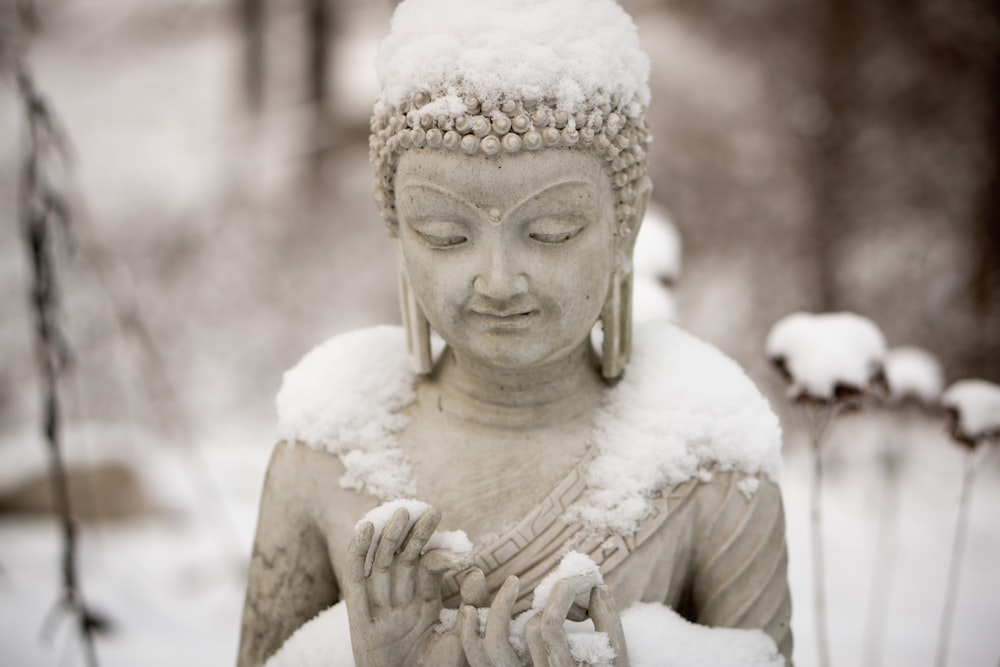


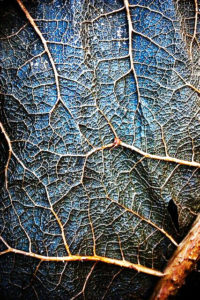 And if we can see in these “imperfections” just the certain beauty and uniqueness, sure our life can be also happier than the life of those, who keep trying to merge with the above-mentioned concept of perfection and eternity or those who are unsuccessfully expecting it all from their surroundings.
And if we can see in these “imperfections” just the certain beauty and uniqueness, sure our life can be also happier than the life of those, who keep trying to merge with the above-mentioned concept of perfection and eternity or those who are unsuccessfully expecting it all from their surroundings.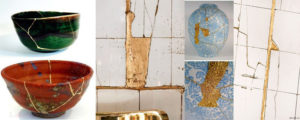
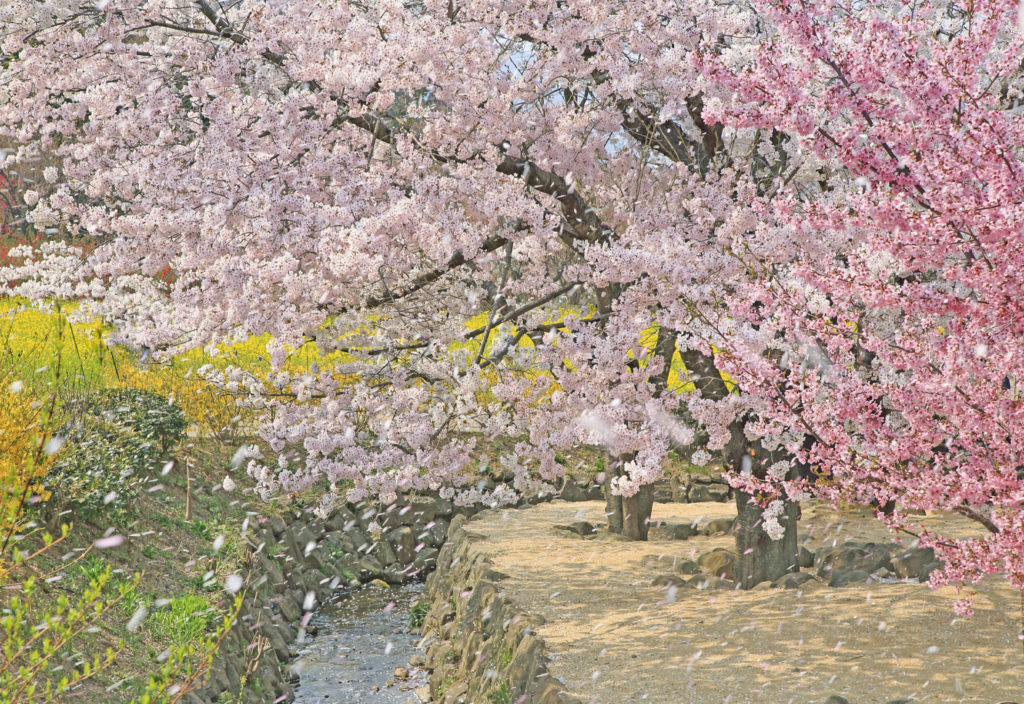 Every year at the end of March or the beginning of April, when most of us are preparing for or already celebrating Easter holidays, the Japanese celebrate a great holiday of cherry blossoms -Hanami.
Every year at the end of March or the beginning of April, when most of us are preparing for or already celebrating Easter holidays, the Japanese celebrate a great holiday of cherry blossoms -Hanami.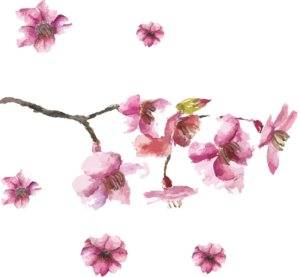 Hanami, roughly translated as flower viewing, is a very old Japanese custom how to celebrate the end of the winter and the beginning of spring and how to enjoy the tranquil beauty of spring tree flowers.
Hanami, roughly translated as flower viewing, is a very old Japanese custom how to celebrate the end of the winter and the beginning of spring and how to enjoy the tranquil beauty of spring tree flowers.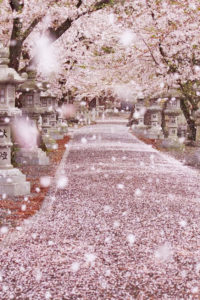 After the first few blossoms, all sakuras are quickly covered in the gentle beauty of mostly pale pink or white dresses of millions of flowers Some species of sakura have flowers in dark pink, yellow and some are almost green. But the flowers will only last on the trees for a week or two until they start falling down. Sakura flowers are considered to be the symbol of the transience of life. So, it can be said, that the hanami is also kind of
After the first few blossoms, all sakuras are quickly covered in the gentle beauty of mostly pale pink or white dresses of millions of flowers Some species of sakura have flowers in dark pink, yellow and some are almost green. But the flowers will only last on the trees for a week or two until they start falling down. Sakura flowers are considered to be the symbol of the transience of life. So, it can be said, that the hanami is also kind of 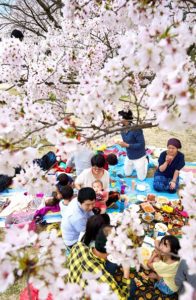
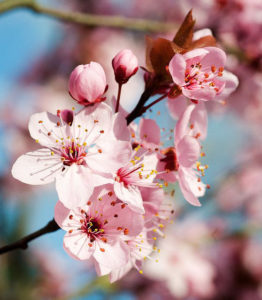 and centuries before the hanami became a massive affair. Naturally, nationwide popularity is also used by companies for commercial purposes.
and centuries before the hanami became a massive affair. Naturally, nationwide popularity is also used by companies for commercial purposes.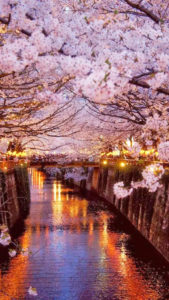
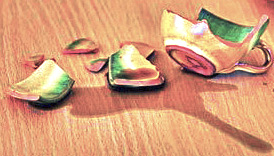
 If it is a very precious or favourite piece of yours and it has not cracked to too many shards, you might want to try to fix it so that it would not be visible repair. Then you can use such a mug, for example, for pencils, plate or bowl under the flower. But only if you can get it together in such way that it is not at first sight recognizable. Otherwise, you just throw it away.
If it is a very precious or favourite piece of yours and it has not cracked to too many shards, you might want to try to fix it so that it would not be visible repair. Then you can use such a mug, for example, for pencils, plate or bowl under the flower. But only if you can get it together in such way that it is not at first sight recognizable. Otherwise, you just throw it away.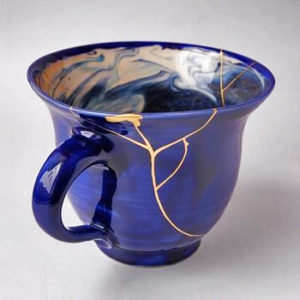
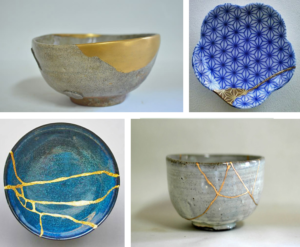
 The art of Kintsugi dates back to the end of the 15th century. According to one legend, this art came into being when Japanese shogun Ashikaga Yoshimasa sent a cracked Chinese chawan (a tea bowl) back to China for a repair. After its return, Yoshimasa was disappointed to find that this was corrected by unsightly metal staples. This motivated his craftsmen to find an alternative, aesthetically pleasing method of repair. And so Kintsugi was born.
The art of Kintsugi dates back to the end of the 15th century. According to one legend, this art came into being when Japanese shogun Ashikaga Yoshimasa sent a cracked Chinese chawan (a tea bowl) back to China for a repair. After its return, Yoshimasa was disappointed to find that this was corrected by unsightly metal staples. This motivated his craftsmen to find an alternative, aesthetically pleasing method of repair. And so Kintsugi was born.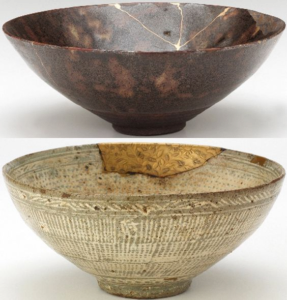 Collectors were so enchanted by this new art that some were accused of deliberately breaking valuable pottery to repair it with the golden Kintsugi seams. Kintsugi became closely associated with the ceramic vessels used for the Japanese tea ceremony – the chanoyu. However, over time, this technique has also been applied to ceramic pieces of non-Japanese origin, including China, Vietnam and Korea.
Collectors were so enchanted by this new art that some were accused of deliberately breaking valuable pottery to repair it with the golden Kintsugi seams. Kintsugi became closely associated with the ceramic vessels used for the Japanese tea ceremony – the chanoyu. However, over time, this technique has also been applied to ceramic pieces of non-Japanese origin, including China, Vietnam and Korea. Since its inception, Kintsugi technique has been connected and influenced by various philosophical thoughts. Specifically, with Japanese philosophy
Since its inception, Kintsugi technique has been connected and influenced by various philosophical thoughts. Specifically, with Japanese philosophy 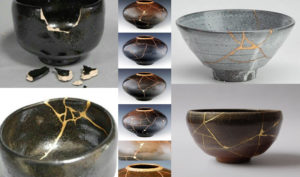 Crack repair method – use of gold dust and resin or lacquer to fix broken pieces with minimal overlapping or filling of missing pieces
Crack repair method – use of gold dust and resin or lacquer to fix broken pieces with minimal overlapping or filling of missing pieces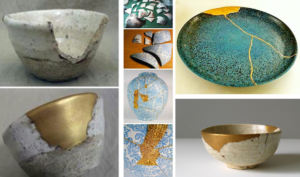 The piece recovery method – if a ceramic fragment is not available, it is produced and supplemented exclusively by epoxy resin – golden mixtures
The piece recovery method – if a ceramic fragment is not available, it is produced and supplemented exclusively by epoxy resin – golden mixtures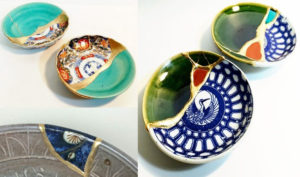 Joint call method – the missing piece of ceramics is replaced by a similarly shaped but inconsistent fragment of aesthetically different ceramics. It combines two visually different works into one unique piece. It is a method reminiscent of the well-known patchwork.
Joint call method – the missing piece of ceramics is replaced by a similarly shaped but inconsistent fragment of aesthetically different ceramics. It combines two visually different works into one unique piece. It is a method reminiscent of the well-known patchwork.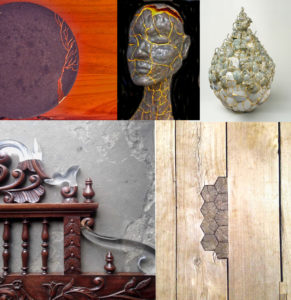


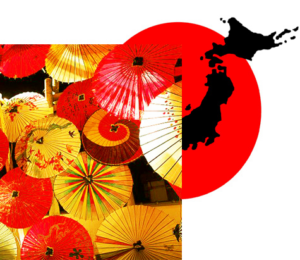

 Judo, shiatsu or meditation, and later also
Judo, shiatsu or meditation, and later also 
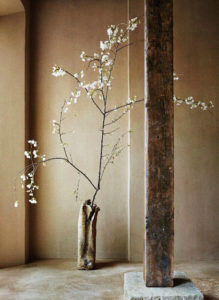
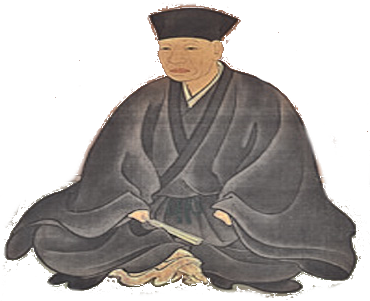
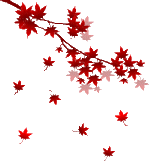 Sen no Rikyū was a young man who wanted to learn the art of the tea ceremony. So he went to the famous tea master Takeno Jōō, who instructed him to clean up and rake up a garden full of leaves as an entrance exam. After its thorough work, Rikyū checked the flawless and perfect appearance of the garden, but before he showed it to his master, he shook a tree – probably the Japanese Red Maple tree – and several beautifully coloured leaves fell on the ground.
Sen no Rikyū was a young man who wanted to learn the art of the tea ceremony. So he went to the famous tea master Takeno Jōō, who instructed him to clean up and rake up a garden full of leaves as an entrance exam. After its thorough work, Rikyū checked the flawless and perfect appearance of the garden, but before he showed it to his master, he shook a tree – probably the Japanese Red Maple tree – and several beautifully coloured leaves fell on the ground.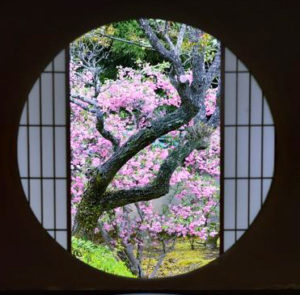 According to another variant of the story, it was a blooming Sakura and Rikyū shook a tree to drop a couple of flowers. I don’t know, but we have a Japanese cherry tree in our garden. When it blooms, it’s really beautiful, but the flowers are falling in a big way by themselves without shaking the tree. However, this story to a certain extent essentially characterizes wabi-sabi – in the beauty of imperfection, transience and incompleteness.
According to another variant of the story, it was a blooming Sakura and Rikyū shook a tree to drop a couple of flowers. I don’t know, but we have a Japanese cherry tree in our garden. When it blooms, it’s really beautiful, but the flowers are falling in a big way by themselves without shaking the tree. However, this story to a certain extent essentially characterizes wabi-sabi – in the beauty of imperfection, transience and incompleteness.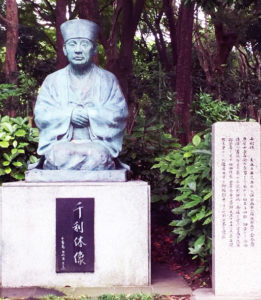 Harmony, respect, purity and tranquillity are still the bases not only of the tea ceremony. Indeed, the Rikyū himself is even in these days revered by the Japanese and considered to be the first to understand the core of the cultural and philosophical direction of wabi-sabi – the art of finding beauty in imperfection, weighing every moment in its transience, honouring the authenticity. Wabi-sabi is interpreted as “the wisdom of natural simplicity“.
Harmony, respect, purity and tranquillity are still the bases not only of the tea ceremony. Indeed, the Rikyū himself is even in these days revered by the Japanese and considered to be the first to understand the core of the cultural and philosophical direction of wabi-sabi – the art of finding beauty in imperfection, weighing every moment in its transience, honouring the authenticity. Wabi-sabi is interpreted as “the wisdom of natural simplicity“.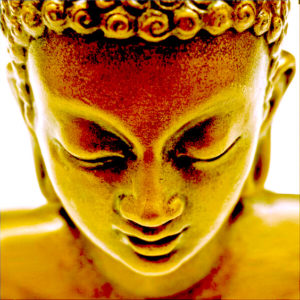
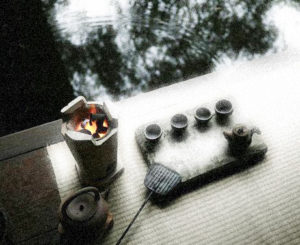 From the end of the 12th century, Zen Buddhism has begun to spread from China to Japan. At the beginning of the thirteenth century, the art of the tea ceremony also developed in Japan, mainly thanks to Buddhist priests.
From the end of the 12th century, Zen Buddhism has begun to spread from China to Japan. At the beginning of the thirteenth century, the art of the tea ceremony also developed in Japan, mainly thanks to Buddhist priests.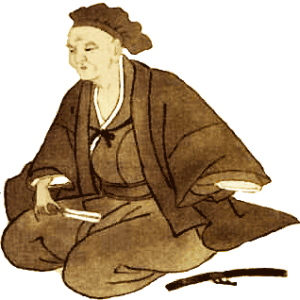 Already at the end of the 15th century, the Zen monk Murata Jukō began to rebel against the existing rules of the tea ceremony. By, for example, opening access to the tea ceremony even for ordinary people. He ended this period of tea ceremony as a certain extravagance for the chosen ones. He also began to use ordinary unruly ceramics made by local people. This is also why is Jukō mentioned as the first known tea master of wabi-sabi.
Already at the end of the 15th century, the Zen monk Murata Jukō began to rebel against the existing rules of the tea ceremony. By, for example, opening access to the tea ceremony even for ordinary people. He ended this period of tea ceremony as a certain extravagance for the chosen ones. He also began to use ordinary unruly ceramics made by local people. This is also why is Jukō mentioned as the first known tea master of wabi-sabi.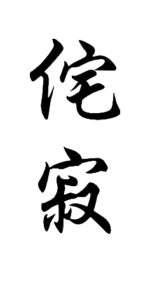 When I found out about wabi-sabi, I haven’t thought that much about what these words meant in a translation. I was ok with the abbreviated explanation of the principles of Japanese aesthetics. I perceived wabi-sabi as its name. I just liked the words and I liked their sound. Especially
When I found out about wabi-sabi, I haven’t thought that much about what these words meant in a translation. I was ok with the abbreviated explanation of the principles of Japanese aesthetics. I perceived wabi-sabi as its name. I just liked the words and I liked their sound. Especially 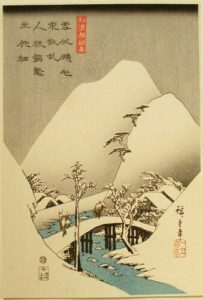 Once upon a long time ago the meaning of these words was very gloomy: “Wabi” indicated the misery of a lonely life in nature, sadness and dejection. “Sabi” meant cold, poor or even withered. At the end of 14th century, these words began to shift towards a somewhat more positive and poetic meaning – the voluntary loneliness and poverty of hermits and ascetics were taken as an opportunity for spiritual enrichment as a basis for new and pure beauty.
Once upon a long time ago the meaning of these words was very gloomy: “Wabi” indicated the misery of a lonely life in nature, sadness and dejection. “Sabi” meant cold, poor or even withered. At the end of 14th century, these words began to shift towards a somewhat more positive and poetic meaning – the voluntary loneliness and poverty of hermits and ascetics were taken as an opportunity for spiritual enrichment as a basis for new and pure beauty. “Wabi” today means something like simple, non-materialistic, modest, humble of his own volition, in accordance with nature, perceptive. “Sabi” can be literally translated as “blossom of time”-or a nice patina, it’s something that has been going on for some time. At present, both these words are often perceived by many Japanese as having more or less the same meaning.
“Wabi” today means something like simple, non-materialistic, modest, humble of his own volition, in accordance with nature, perceptive. “Sabi” can be literally translated as “blossom of time”-or a nice patina, it’s something that has been going on for some time. At present, both these words are often perceived by many Japanese as having more or less the same meaning. In a simplified way, wabi-sabi can be described as thinking of celebrating the natural imperfection of the world and seeing a certain beauty in that imperfection. It is finding some evaluation and grace that brings the influence of time, for the things around us as well as for ourselves. It also perceives eventual defects as a certain uniqueness, awareness of the impermanence time.
In a simplified way, wabi-sabi can be described as thinking of celebrating the natural imperfection of the world and seeing a certain beauty in that imperfection. It is finding some evaluation and grace that brings the influence of time, for the things around us as well as for ourselves. It also perceives eventual defects as a certain uniqueness, awareness of the impermanence time. with the writing and citation of very short poems (unlike the very large books of Western philosophers).
with the writing and citation of very short poems (unlike the very large books of Western philosophers).
